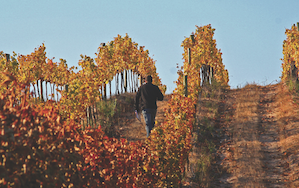Santa Rita Estates export director Andrés Lavados adds that Chile’s Merlot and Chardonnay volumes are down due to the popularity of other varieties such as Malbec, Moscato and Pinot Grigio, which are not strongly represented by Chile. Nevertheless, volumes of Cabernet, Pinot Noir and Sauvignon Blanc are up.
As to trends in the vineyards and wineries, Felipe Tosso, head winemaker at Viña Ventisquero says: “Trends we’ve noticed include the global interest in Chile’s cooler-climate wines from the coastal valleys. Soils in the coastal valley areas are really interesting and giving fascinating results. We planted a new vineyard a few years ago in the Leyda Valley – an area which has really built a reputation for itself over the past few years – just a few kilometres from the sea. We are already producing Sauvignon Blanc, Chardonnay and Pinot Noir from these vineyards that exhibit a great level of quality, freshness, lower alcohols and great acidity. We also have plantings of Syrah, Gewürztraminer and Viognier here, which we’re very excited about.
“Our most exciting and extreme project is in the Chilean desert, in Atacama. We have a small vineyard in this cool desert which has a huge coastal influence where we produce white and red wines under our new Tara Brand. We had to draw on – then question and rewrite – every bit of viticulture and winemaking knowledge we had to find a new way of doing things here. It’s a completely different proposition to anything we’ve done before. Initial feedback is really positive and we expect this wine to do well globally”, says Tosso (see Chilean wines to watch).
Right direction
Adolfo Hurtado, Cono Sur general manager and chief winemaker, says: “I feel Chile is headed in the right direction and that consumers are open to buying more of our expensive and premium wines. Our country is no longer perceived as only a producer of good price quality wines. New varieties such as Pinot Noir, Syrah and aromatics like Riesling, Viognier and Gewürztraminer are an important part of what Chile has to offer. Also, sparkling and late harvest are more popular each day.”
Terramater export manager Camila Valdivia says: “We have increased our sales in the premium area, especially in countries such us Canada, the UK, US and Germany. Our clients are changing from entry-level wines, or medium quality wines, to more premium quality wines, opening their portfolio of products.
“We have seen that our clients and also potential clients are now more open to looking for interesting blends and different grapes, and we have the opportunity of giving them what they need because of our big portfolio of products. We have also noticed that clients are relating to Cabernet Sauvignon and Carmenère more and more with good Chilean wines.”
Challenges
Ben Gordon, commercial director of Colchagua boutique winery Estampa, does not think Chile is quite there yet. He sees two challenges: “The average consumer still portrays Chile as the perfect category for more inexpensive wines, but for special purchases will automatically default to Old World producers with more prestige but not always the same level of quality.
“The increase in wine becoming more of a commodity as supermarkets gain market share means the bigger players are getting bigger and the valuable message Chile has to offer of diversity and quality is not always getting to the shelves as buying different brands at different price-points is an easy way to solve the majority of your category issues in one fell swoop but doesn’t do Chilean wine justice.”




